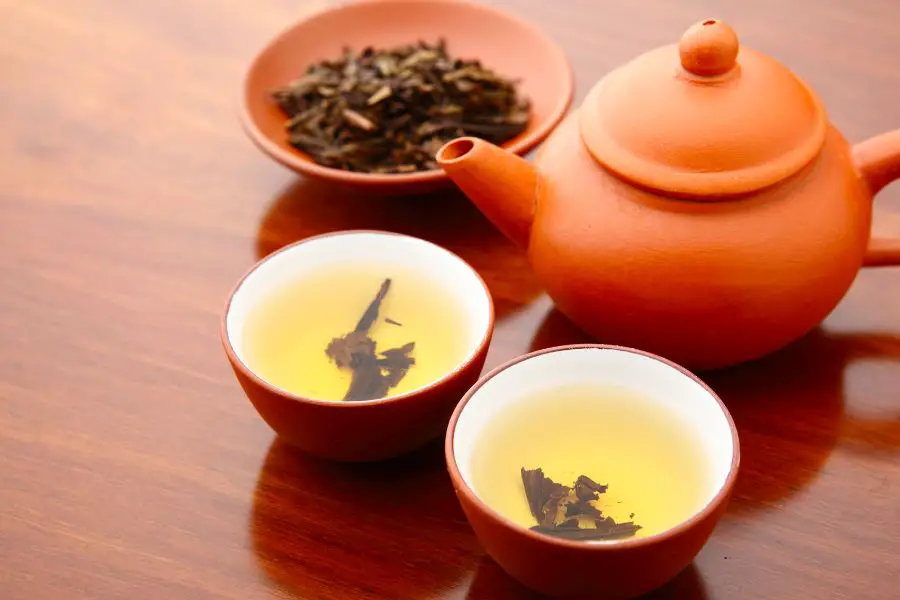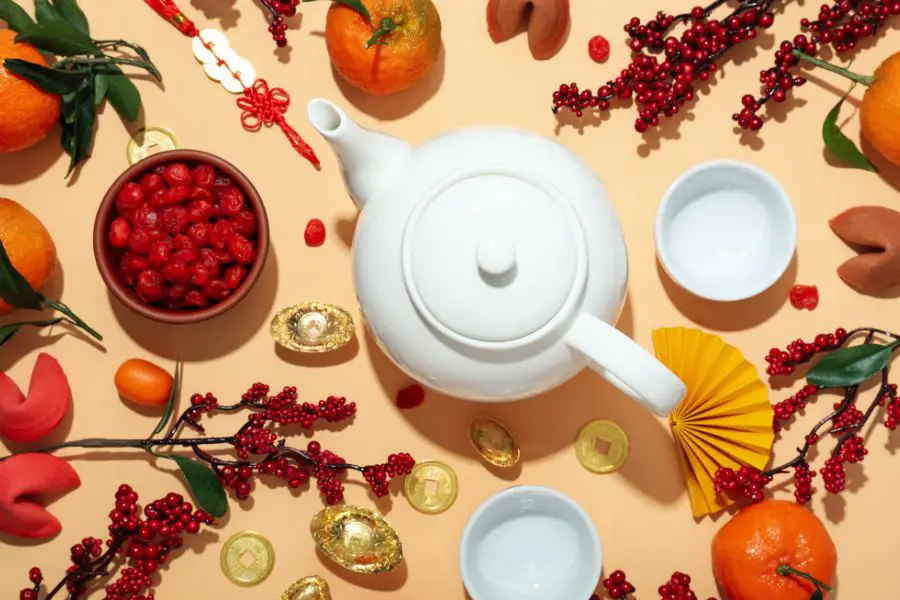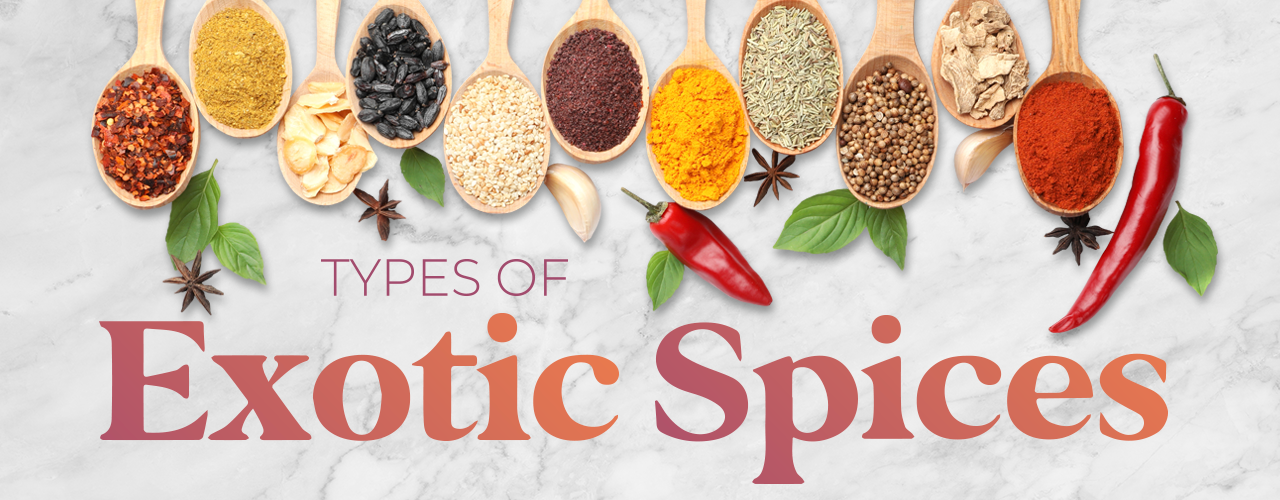Asian teas offer a wide variety of flavors, aromas, and health benefits. They are rich in cultural heritage and have gained popularity worldwide for their unique taste and medicinal properties.
Asian teas, including green tea, oolong tea, and black tea, have long been celebrated for their aromatic flavors and numerous health benefits. These traditional beverages have gained global recognition for their rejuvenating properties and are enjoyed by people from diverse cultures.
The fascinating blend of history and taste makes Asian teas a captivating choice for those seeking a delightful and healthy beverage experience. Whether it’s the delicate fragrance of green tea or the robust flavor of black tea, Asian teas continue to captivate tea enthusiasts with their rich blend of tradition and wellness.

The History Of Asian Teas
Asian teas have a history steeped in tradition and culture, with the practices and rituals surrounding tea consumption dating back thousands of years. Let’s explore the fascinating story of Asian teas, from their ancient roots to their widespread influence.
Ancient Roots
The origins of Asian teas can be traced back to ancient China, where legend has it that Emperor Shen Nong discovered tea around 2737 BC when tea leaves blew into a pot of boiling water. The early consumption of tea was primarily for its medicinal properties, as it was believed to have healing and restorative effects.
The cultivation and processing of tea gradually evolved, and by the Tang dynasty (618-907 AD), tea had become an integral part of Chinese culture. It was during this time that tea preparation rituals and the appreciation of tea as an art form began to take shape.
Spread And Influence
Tea eventually spread beyond China, finding its way to neighboring countries such as Japan, Korea, and Vietnam. Each region embraced tea in its own unique way, incorporating local customs and traditions into the cultivation, preparation, and consumption of tea.
Throughout history, the influence of Asian teas extended far beyond their countries of origin, with tea trade routes connecting East and West. The renowned Silk Road played a crucial role in the proliferation of tea, facilitating cultural exchange and introducing tea to new regions.
Varieties Of Asian Teas
Explore the rich and diverse world of Asian teas, featuring a wide array of flavors and aromas. From delicate green teas to robust black teas and fragrant oolongs, Asian teas offer something for every palate. Experience the time-honored traditions and exquisite craftsmanship behind these beloved brews.
Green Teas
Green teas are known for their vibrant colors and fresh flavors. These teas have a delicate and non-oxidized nature that helps preserve their natural properties. With origins in China, Japan, and other Asian countries, green teas are often celebrated for their health benefits. They are packed with antioxidants that can support your immune system and boost overall well-being. Green teas are also known for their rich content of catechins, which are known to help with weight management and promote heart health. Some popular varieties of green teas include Matcha, Sencha, and Dragon Well.
Oolong Teas
Oolong teas are a middle ground between green and black teas, undergoing a partial oxidation process. This unique processing method gives oolong teas their distinct flavor profiles and aromas. Originating from China and Taiwan, oolong teas offer a wide range of flavors, from floral and fruity to woody and toasty. These teas are often cherished for their digestive properties and potential weight management benefits. Some popular oolong tea varieties include Tie Guan Yin, Dong Ding, and Da Hong Pao.

Black Teas
Black teas, also known as red teas in some Asian countries, go through a full oxidation process. This oxidation gives the tea leaves a dark color and a robust, bold flavor profile. China, India, and Sri Lanka are famous for their black tea production. These teas are well-loved for their strong and invigorating taste, often enjoyed with milk or lemon. Black teas are also known for their higher caffeine content compared to other tea varieties, providing an energizing boost to start your day. Some popular black teas include Assam, Darjeeling, and Keemun.
White Teas
White teas are the least processed among all tea varieties, made from young and delicate buds and leaves. The minimal processing helps retain the tea’s natural freshness and subtlety. Originating from China, white teas are known for their mild flavors, often described as floral, sweet, and delicate. These teas are also recognized for their high antioxidant content, which can help protect your body against free radicals. Silver Needle, White Peony, and Tribute Eyebrow are some popular white tea varieties.
Herbal Teas
Herbal teas, also known as tisanes, are not technically teas as they do not come from the Camellia sinensis plant. Instead, herbal teas are made from a variety of plants, flowers, and herbs, offering a wide range of flavors and potential health benefits. Asian countries like China and India have a long history of using herbs and botanicals for medicinal purposes. Herbal teas can be enjoyed both hot and cold, and they are often caffeine-free, making them a great choice for those looking for a soothing and relaxing drink. Some popular herbal tea variations include chamomile, peppermint, and ginger.
Cultural Significance
Asian teas hold profound cultural significance, deeply ingrained in traditions and rituals. From the soothing ceremony of Japanese matcha to the spiritual symbolism of Chinese tea culture, each cup reflects centuries of heritage and reverence for nature. These teas are not just beverages, but living embodiments of Asian cultural heritage and wisdom.
Tea Ceremonies
Tea ceremonies hold a special place in Asian culture, representing a harmonious blend of elegance, ritual, and hospitality. These ceremonies are deeply rooted in tradition and are regarded as a symbol of respect, gratitude, and tranquility. In countries like Japan and China, tea ceremonies have been cherished for centuries and are considered a true art form, highlighting the importance of mindfulness, presence, and connection.
During a traditional tea ceremony, every step is carefully executed with intricate precision. From the preparation of the tea leaves to the pouring and serving process, each gesture and movement has significance. The tea master, with years of training and expertise, brings grace into every action, making the ceremony a mesmerizing experience. The serene ambiance, the graceful movements, and the fragrance of the tea together create a meditative atmosphere that allows participants to escape the chaos of everyday life.
Symbolism And Traditions
Asian teas have deep symbolism connected to various cultural practices and beliefs. In Chinese culture, tea is often associated with concepts like harmony, balance, and peace. The brewing and serving of tea can signify unity and reconciliation, making it a common practice during family gatherings and important ceremonies. Tea is also known to have healing properties, and its consumption is believed to rejuvenate the mind, body, and spirit.
Different types of tea are associated with specific occasions and customs. For instance, in Japan, the powdered green tea known as Matcha is often used in tea ceremonies and is cherished for its vibrant green color and umami flavor. In China, oolong tea is highly regarded for its complex flavors and is often reserved for special guests or served as a celebration of important events.
The preparation and serving of tea differ across various Asian cultures. In some regions, it is customary to serve tea to guests as a gesture of hospitality and respect. The act of pouring tea for others is considered an expression of generosity and warmth. The host carefully observes the preferences of the guests, ensuring that their cups are always filled and never empty.
In conclusion, tea ceremonies and the associated traditions and symbolism play a significant role in Asian culture. These ceremonies provide a momentary break from the fast-paced world, allowing individuals to appreciate the beauty of simplicity, connection, and mindfulness. Whether it is the delicate movements of the tea master during a ceremony or the act of serving tea to guests, Asian teas have a captivating cultural significance that transcends borders and time.

Health Benefits
Asian teas offer a plethora of health benefits, making them a popular choice among tea enthusiasts worldwide. Known for their rich flavors and aromas, these teas come packed with antioxidants and nutrients that promote overall wellness. Moreover, they have been traditionally used as a natural remedy in Asian medicine. In this article, we will explore the health benefits of Asian teas, focusing on two key aspects: Antioxidants and Nutrients and Wellness and Traditional Medicine.
Antioxidants And Nutrients
Asian teas, such as green tea, black tea, and white tea, are loaded with antioxidants and essential nutrients that support good health. These powerful antioxidants help combat oxidative stress, which can lead to premature aging and various diseases. Green tea, for instance, contains high levels of flavonoids, catechins, and polyphenols that have been linked to numerous health benefits. Studies suggest that these compounds may help reduce the risk of heart disease, lower cholesterol levels, and support healthy weight management.
Black tea, on the other hand, is rich in theaflavins and thearubigins, antioxidants that have been shown to have anti-inflammatory properties. Regular consumption of black tea may promote healthy digestion, improve gut health, and boost the immune system.
White tea, known for its delicate taste and light flavor, is an excellent source of vitamins, minerals, and antioxidants that are beneficial for overall well-being. It has been found to contain high levels of catechins and EGCG (epigallocatechin Gallate), which are known for their powerful antioxidant effects. These compounds help protect the body’s cells from damage caused by free radicals and may contribute to a lower risk of chronic diseases.
Wellness And Traditional Medicine
Asian teas have long been valued in traditional medicine for their therapeutic properties. For centuries, various Asian cultures have used teas like green tea, jasmine tea, and oolong tea as natural remedies for a range of ailments.
Green tea, for instance, has been used in Chinese medicine to promote mental clarity and enhance vitality. The powerful antioxidants present in green tea are believed to help optimize brain function and improve cognitive performance.
Jasmine tea, with its soothing aroma and delicate floral notes, has been traditionally consumed to alleviate stress and anxiety. It is believed to have calming effects on the mind and body and is often used for relaxation and promoting better sleep.
Oolong tea, a traditional Chinese tea, is known for its potential to aid weight loss and improve metabolism. Rich in antioxidants, oolong tea may help increase fat oxidation, boost energy expenditure, and regulate blood sugar levels.
In conclusion, Asian teas offer a wide range of health benefits, thanks to their antioxidant content and traditional medicinal uses. Whether you prefer green, black, white, or oolong tea, incorporating these beverages into your daily routine can contribute to your overall health and well-being.
Preparing And Enjoying Asian Teas
Asian teas have a rich history, diverse flavors, and unique brewing techniques that make them a truly delightful beverage. Whether you are new to the world of Asian teas or a seasoned connoisseur, there are various ways to prepare and enjoy these exquisite teas. In this article, we will explore the different brewing techniques, the art of pairing Asian teas with food, and the fascinating blend of modern and traditional practices that enhance the tea-drinking experience.

Brewing Techniques
In Asian culture, brewing tea is considered an art form that requires precision, patience, and attention to detail. Each tea type demands specific brewing techniques to unlock its true flavors and aromas.
Here are some popular brewing techniques for Asian teas:
- Gongfu Cha: This traditional Chinese brewing method involves steeping tea leaves in a small clay teapot. The leaves are steeped multiple times, resulting in a rich and concentrated flavor profile.
- Senchado: Popular in Japan, Senchado involves brewing green teas such as Sencha or Gyokuro in a small ceramic teapot. It requires a careful balance of water temperature and brewing time to achieve the desired taste.
- Taiwanese-Style Brewing: This technique is commonly used for oolong teas. It involves multiple short infusions using a small teapot or gaiwan, allowing the flavors to develop gradually with each steep.
- Milk Tea: A beloved beverage in many Asian countries, milk tea can be prepared by steeping black tea leaves in hot water, followed by the addition of milk and sweeteners like condensed milk or sugar. It can be enjoyed hot or cold.
Pairing With Food
Asian teas offer a perfect complement to a wide range of dishes, enhancing the flavors and creating a harmonious dining experience. The key to successful pairing lies in balancing the taste profiles of both the tea and the food.
Here are some food and tea pairing suggestions:
| Tea Type | Recommended Food Pairing |
|---|---|
| Green Tea | Sushi, steamed seafood, light salads |
| Oolong Tea | Grilled meats, roasted vegetables, spicy dishes |
| White Tea | Fruits, mild cheeses, light desserts |
| Black Tea | Pastries, chocolate, hearty stews |
Modern And Traditional Practices
As the world embraces new technologies and lifestyles, the preparation and enjoyment of Asian teas have also evolved. While traditional practices continue to thrive, modern methods and innovations have added a new dimension to the tea-drinking experience.
For example, tea bags or sachets provide convenience without compromising on taste. Many tea enthusiasts also embrace the use of electric kettles or temperature-controlled tea makers to simplify the brewing process. However, it is important to remember and respect the roots and cultural significance of Asian teas, even as new practices emerge.
With a deep appreciation for tradition and an openness to modern innovation, one can truly savor the joy of preparing and enjoying Asian teas.

Frequently Asked Questions On Asian Teas
What Are The Health Benefits Of Drinking Asian Teas?
Drinking Asian teas offers numerous health benefits such as boosting metabolism, improving heart health, reducing inflammation, and promoting relaxation and mental clarity. These teas are rich in antioxidants, vitamins, and minerals, supporting overall well-being and immune system function.
How Is Asian Tea Different From Traditional Tea?
Asian teas, like green tea, matcha, and oolong, are distinct from traditional teas due to their unique production methods and flavor profiles. They are often unoxidized or partially oxidized, preserving their natural antioxidants and delicate flavors. Traditional teas, such as black tea, undergo full oxidation, resulting in robust flavors.
Can Asian Teas Aid In Weight Loss?
Yes, Asian teas can aid in weight loss by increasing metabolism, promoting fat burning, and reducing appetite. Green tea and oolong tea have been shown to boost calorie expenditure and enhance fat oxidation. Incorporating these teas into a balanced diet and active lifestyle can support weight management goals.
How Do I Brew Asian Teas Properly?
To ensure the best taste and benefits, properly brew Asian teas by following these steps:
1. Use fresh, filtered water heated to the recommended temperature. 2. Allow the tea leaves to steep for the appropriate time (varying based on the type of tea). 3. Strain the tea or remove the infuser/bag to prevent oversteeping. 4. Enjoy it plain or with a touch of honey or lemon, according to your preference.
Conclusion
To conclude, Asian teas offer a delightful journey for tea enthusiasts, with their diverse flavors and health benefits. From the earthy richness of matcha to the floral notes of jasmine tea, there is something for everyone’s palate. Whether you are seeking relaxation or a boost in energy, these teas provide a soothing and rejuvenating experience.
Incorporate Asian teas into your daily routine and savor the centuries-old tradition of tea drinking.
